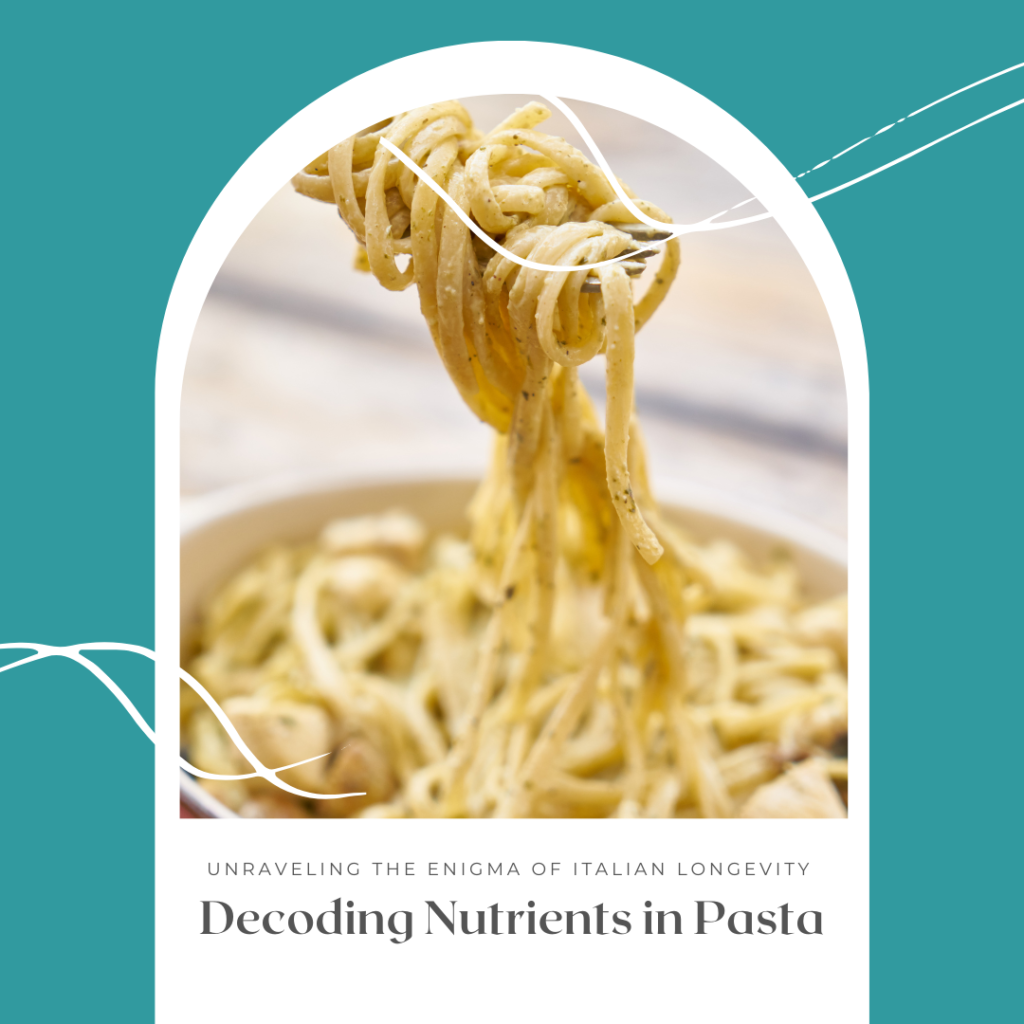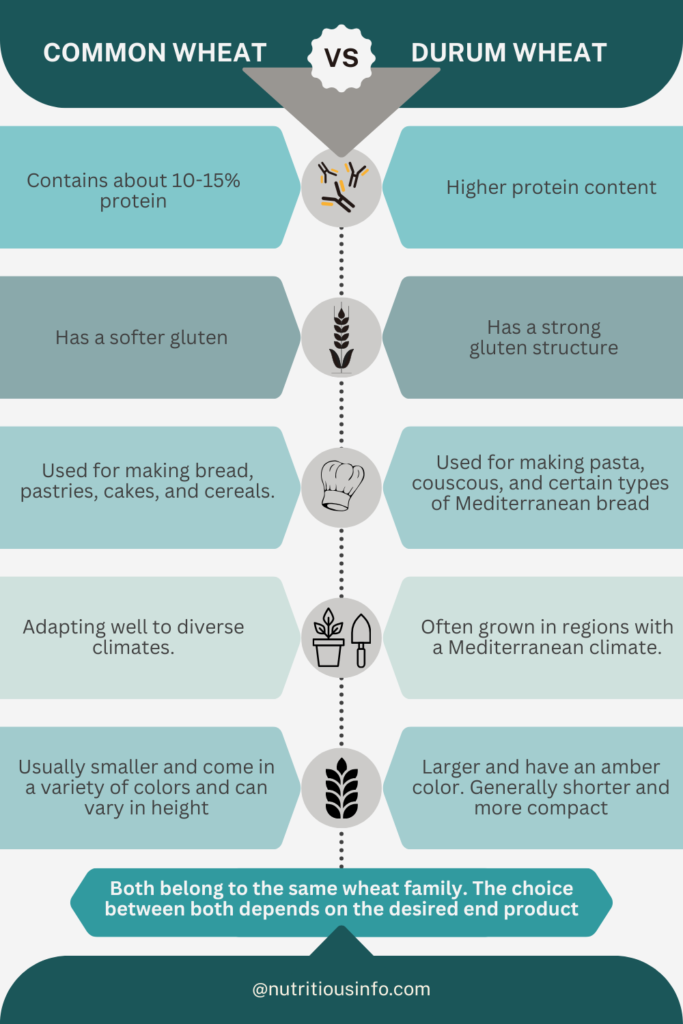Unraveling the Enigma of Italian Longevity

There is something that always keeps me wondering. The more I learn about nutrition, the more I become convinced about the fact that over-reliability on carbohydrates is the culprit for most of our health issues. HOWEVER, we always gave Italians the credits for healthy food “the mediterranean diet”. But they eat pastas and pizzas??!!!. They are known for living longer than any region in the world, and they are tied with Japan as well. So I did my research on what nutrients in pasta? what it is made from? Is it bad? How come Italians survived while having pasta?? In this blog post, let’s explore the nutritional value of pasta and the secret behind Italian living long while eating pastas.
Italian Longevity:
It is not new that Italians live quite long, compared to other regions. The longevity of Italians, particularly those adhering to the Mediterranean diet, remains a captivating enigma in the realm of health and nutrition. The secret to their extended lifespan is intricately woven into the fabric of their lifestyle and dietary choices. Embracing a diet rich in fresh fruits, vegetables, olive oil, and lean proteins, Italians prioritize whole, unprocessed foods, even when consuming pastas and bread. Additionally, the cultural emphasis on social connections, regular physical activity, and a slower pace of life may contribute to the holistic well-being that extends the years of Italian lives.
This will be for sure explained later on other blogs 😉
Nutritional profile and beyond:

Pasta is primarily made from durum wheat. The second most cultivated species of wheat after bread wheat. It is then grounded to semolina, providing a rich source of complex carbohydrates and a significant amount of dietary fiber. It has a higher content of protein, and it is slower when it comes to digestion. But it is still WHEAT!! Nutrients in pasta is somehow similar to the common wheat.
“Durum wheat and common wheat have similar nutritional profiles. However, due to differences in genetic makeup, durum wheat is best used to make pasta, while common wheat is more suitable for making bread.”
Pasta, like any other source of carbohydrates, which can cause an increase in blood sugar levels and trigger the release of insulin. However, the glycemic index (GI) of pasta is lower than that of white bread and white rice, meaning that it is less likely to cause a spike in blood sugar levels INITIALLY. If you measure your blood sugar levels after 3-4 hours, you will notice the glucose spike. So it is still raise the blood sugar levels. The presence of fiber and protein in pasta slows down its digestion, leading to a gradual release of glucose into the bloodstream.
Italians’ Pasta:
According to one interview made by Dr. berg with an Italian lady, ITALIANS EAT LITTLE PASTA!!! As I read, I found that they do consume a decent amount of pasta but it is decreasing. Anyway, what is interesting, they still live longer than most regions around the world. That’s because the QUALITY of their pastas are better than any place.
European pastas do not spray glyphosate and are not enriched with iron. What’s good about it??
Glyphosate is among the world’s most widely used herbicides. Not to complicate things, all chemicals introduced or processed during cultivating, delivery, and buying are considered a risk to our health, including Glyphosate. It is found that it disturbs out microbiome, which means it could be the reason behind the consistent bloating 🤔
However, the use of it in pastas is limited in Europe. Therefore, it is considered a better option. But that does not mean it is always glyphosate free.
By the way, this chemical isn’t used on pastas only!!
Fortification and enrichment have become essential for food industries to ensure better nutritional quality in products. But I always wonder, if the specific nutrient originally is not in the product, Why do we forcibly fortify it or enrich it?!!! We can compensate with other ingredients!!! And when we look at the iron enrichment specifically, iron accumulates in our body. It is considered a heavy metal that our body can’t get rid of easily. It’s attracted to damaged parts of your body tissue, causing oxidative damage. And interestingly, we still suffer from anaemia!!!.
Balancing Your Pasta Dish:
Achieving balance in our diet is paramount for maintaining optimal health and well-being. Striking the right balance involves making mindful choices, considering portion sizes, and incorporating a colorful array of fruits, vegetables, lean proteins, and whole grains.
- Portion Control:
Moderation is key when enjoying pasta. Be mindful of portion sizes to maintain a balanced calorie intake.
- Pairing with Nutrient-Rich Ingredients:
Elevate the nutritional profile of your pasta dish by incorporating vegetables, proteins, and healthy fats. This not only enhances flavor but also adds a variety of nutrients.
Read more in Healthful diet
Conclusion:
In the grand tapestry of a well-rounded diet, pasta emerges as a canvas that can be artfully woven with nutrients. From energizing carbohydrates to valuable proteins, vitamins, and minerals, IF IT WAS BALANCED AND ORGANIC. By making informed choices about the type of pasta you consume and complementing it with nutrient-rich ingredients, you can savor the goodness of this beloved food while nourishing your body. So, next time you twirl that forkful of pasta, do it with the knowledge that you’re indulging in not just a delightful meal, but a nutrient-rich experience.
References:
https://www.healthline.com/nutrition/durum-wheat-vs-whole-wheat#bottom-line https://www.sciencedirect.com/topics/earth-and-planetary-sciences/glyphosate

Great info and I love my pasta
Yummy!!!
Very interesting read… thank you for sharing 🙂
I love to eat whole grain pasta and vegan tomato sauces without animal products in them. I eat only organic pasta that is not grown with pesticides or herbicides or soil that is contaminated with them. The Mediterranean diet is much more than pasta a pizza. Think you need a follow up post for more details and a disclaimer that states this post is intended for educational and entertainment only and not intended as nutritional advice.
Thanks for the note 😉
I love pasta, and this post helped me to understand more about pasta. Thank you!
I love the graph on here it is so helpful
I want to visit Italy for many reasons, one being the food! Can’t wait to experience the authenticity of Italian food.
As an Italian, I like your look into pasta nutrition. Moderation and good ingredients matter. I enjoy fresh, whole foods with pasta, keeping us healthy 🙂
Thanks for this info! Since I started trying to lose weight I’ve demonized pastas overall but this has really educated me on this particular food. Thank you!
Pasta is my go-to dish to eat in a hurry, its quick and easy to make and now, thanks to reading this article, I know its also providing me with the healthy goodness I need. Love this article! 😀
Great info!
I love pasta! When I went to Italy, I lost 5lbs that week, even though I ate croissants from the bakery everyday, for breakfast. Their food has so much less sugar and is served in smaller portions. Italians have it figured out!
interesting 🙂
Interesting read. Balancing the portion is a good addition! Especially in pasta, the portion size does matter. You can have one very healthy and nutritious portion of pasta if you just tweak it correctly.
Sonja
Blue Tea tile
blueteatile.com
Great post! I absolutely love pasta. And I recently traveled to Japan. I read somewhere else that part of the longevity is credited to fermented foods and other nutrients that support the gut microbiology. Great read!
A great read. It surely helped me lower the guilt of cooking up pasta dishes. I would make sure to opt for durum wheat based ones from now onwards and also exercise portion control, as hard it is.
Wow, very informative. Thank you, I have been trying to be more informed about what I eat and what’s in it.
Thanks for all this information on pasta – I was surprised the glycemic index of pasta is lower than rice. Looks like moderation and quality of pasta still has a place on my plate!
Thanks for drawing my attention to this. All the more reason to choose pasta over rice.
but careful, it is still carbs and it does spike your glucose levels after 3-4 hrs of a meal